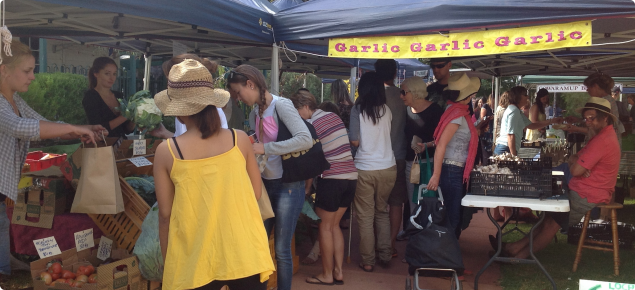Markets provide an environment for farmers and food producers to sell products of farm-origin and associated value-added or processed artisan food direct to customers.
Be it organic, bio-dynamic or conventional production systems, the fresh produce available at farmers’ markets continues to attract a loyal and enthusiastic following.
One of the biggest farmers’ markets in Western Australia’s south-west is the Margaret River Farmers’ Market (MRFM).
The MRFM operates every Saturday hosting a mix of undercover and open stalls at the local community resource centre. Up to 2000 people regularly attend, rising to around 5000 during gourmet food and wine festivals and holidays.
Like many farmers' markets, the MRFM was initially put together to support local farmers and food producers, who in turn support the local economy by providing a more sustainable food supply.
Why are markets important?
| Farmers | Consumers | Communities |
|---|---|---|
| Opportunities for higher profits | Fresh seasonal food | Maintain important social ties, linking rural and urban populations |
| Less handling, transport and time in storage | Social event | Generate traffic for nearby businesses and revitalise town and public space |
| Markets can be used as an outlet to introduce or test new products and gauge consumer interest | More variety – organic, free-range, handmade, heirloom produce and heritage breeds | Create distinction and uniqueness, which can increase pride and encourage visitors to return |
| Supplement or diversify the farm income | Enjoy the outdoors while shopping | Can help teach children about food origin and nutrition |
| Interaction with consumers | Often people can get better prices as the process cuts out the middlemen | Promotion of the consumption of fresh and local produce |



